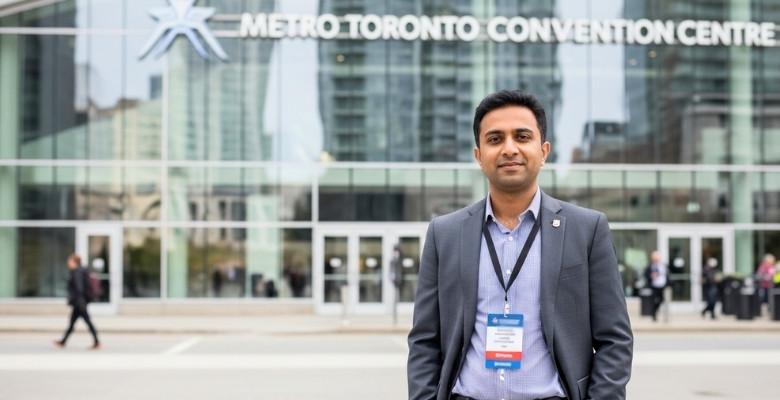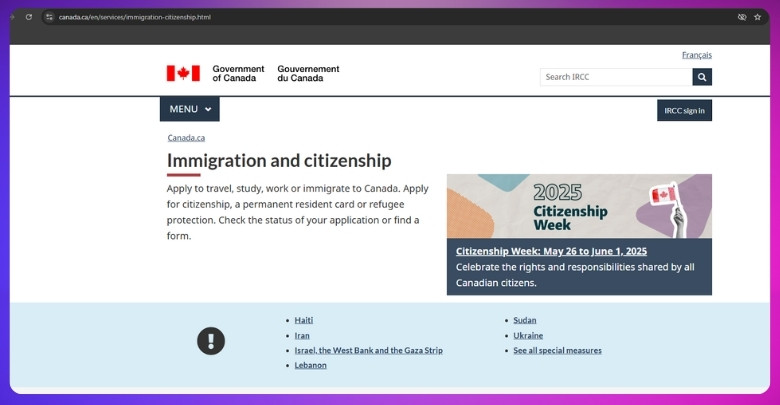Travelers often start their Canada plans by applying for a visitor visa. It’s a key step to explore the country’s beautiful places, exciting cities, and welcoming culture. But for many people, the wait feels longer than expected, which raises the common question: Why is Canada visitor visa taking so long?
Canada visitor visa delays happen for many reasons. Some of the main ones include too many applications at once, background and security checks, requests for interviews, and backlogs at visa offices. Other slowdowns come from missing documents, incomplete forms, and late replies to IRCC requests. Even busy travel seasons and sudden rule changes can make things take longer.
In this article, we’ll break down all the reasons behind the delay and share smart tips to help you handle the wait better. Keep reading to find out what really causes these slowdowns and how you can avoid them.
Why is Canada Visitor Visa Taking So Long?
Waiting for a Canada visitor visa can feel very slow. There isn’t just one reason—it’s usually a mix of different factors. Some are in your control, while others are not. Let’s break down the main causes of delay.

Variation in Processing Time
Processing times are not the same everywhere. For example, canada visitor visa processing time from india can be different than from other countries. They depend on where you apply, how many files your visa office is already handling, and how busy the season is. IRCC updates its processing time tool regularly, so checking this before you apply helps you plan better. Knowing the average wait time also saves you from unnecessary stress.
Extra Steps That Can Add Time
Not every application is the same. Some people are asked for extra documents, a medical exam, or a police certificate. Others may be called for an interview. These steps add more time, but they’re part of the normal canada visa processing time process. Doing things quickly—like booking your biometrics right away—shows you’re ready and helps your file move faster.”
Security Checks
Every applicant goes through background and security checks. This step makes sure it’s safe to let someone into Canada. If something needs a closer look, it can delay things. Even if your history is clear, checks still take time. It doesn’t mean anything is wrong—it’s just part of being thorough.
Interview Requirements
Some applicants may be asked to attend an interview. Officers use this to confirm details about your application, such as your reason for travel or your personal information. Setting up and completing the interview adds an extra step, which naturally makes the process longer.
Too Many Applications
Visa offices often get flooded with applications during busy travel periods like summer vacations and year-end holidays. When there’s a big rush, officers need more time to review each file. Think of it like waiting in a long line at the store, everyone gets served, but it takes longer when the line is full.
Incomplete Forms
One of the biggest reasons for delays is incomplete applications. If something is missing, like a form not filled out correctly or a document not uploaded, IRCC has to stop and ask for it. This back-and-forth slows everything down. In some cases, incomplete files can even be refused. Double-checking your application before submitting saves a lot of time later.
Backlog Problems
Sometimes, delays aren’t about your application at all. Visa offices may already be dealing with a pile of older applications that haven’t been processed yet. This is called a backlog. When new files get added, they have to wait their turn in line. Backlogs usually get worse after holidays or during global events, but everyone in that system is affected.
Slow Replies
If IRCC asks you for extra information, the clock stops until you reply. Many applicants miss emails or take too long to respond, which stalls their file. The faster you send what they need, the sooner your file moves forward. Always check your IRCC account and email inbox (including spam) so you don’t miss important requests.
Policy and Rule Changes
Immigration rules and procedures sometimes change. When that happens, staff need time to adjust to the new steps, which can cause temporary delays. Even if your application is complete, it might take longer if the system is being updated. This is beyond your control, but knowing it happens can make the wait less confusing.
Busy Travel Seasons
Just like rush-hour traffic, things slow down when more people are on the road. Visa offices face the same issue during popular travel seasons. Summer breaks, Christmas, and other holidays bring a surge of applications. If possible, applying before or after these peak times can save you weeks of waiting.
How to Reduce Visa Processing Delays?
Delays can feel stressful, but there are simple steps that help keep your visitor visa application moving smoothly. Some of these steps are in your control and can make a big difference. Let’s go through them one by one below.
Step 1: Apply Online
Submitting your application online is faster than using paper forms. Online applications are easier to track, and updates come directly to your account. Many visitors apply for a visa this way because it saves time and avoids mailing delays. You can also upload documents instantly instead of waiting for mailing services. Choosing the online method often saves valuable time.
Step 2: Submit Biometrics
If you are asked to provide fingerprints and a photo, try to complete this step quickly. Delaying biometrics means your file stays on hold until it is done. Booking your appointment early shows you are ready to move forward. The sooner you finish this step, the sooner your canada visitor visa processing time after biometrics starts and your application continues.
Step 3: Double-Check Forms
Many delays come from small mistakes on forms. Take a few minutes to carefully review every detail before you submit. Make sure names, dates, and numbers match your documents. A clean and correct application prevents unnecessary back-and-forth with officers.
Step 4: Include Documents
Always attach all required documents to your application. Missing papers cause officers to stop and request more information. Using the official checklist can help you stay organized. A complete package speeds up the process and avoids extra waiting.
Step 5: Reply Quickly
Sometimes, IRCC may ask for additional information. Responding quickly keeps your application active and moving. A slow reply can pause your file for weeks. Checking your email and account regularly helps you catch requests on time.
Step 6: Letter of Explanation
If your travel is urgent or linked to an important event, writing a short letter can help. In it, you explain why your trip matters and include supporting documents. This does not guarantee faster approval, but it helps officers understand your case. Being clear and honest is always best. Here are some examples of letters of explanation you can use in this process:
Conference or Business Event
[Your Full Name]
[Your Address]
[Email Address]
[Phone Number]
[Date]To:
Immigration, Refugees and Citizenship Canada (IRCC)Subject: Letter of Explanation for Visitor Visa Application
Dear Visa Officer,
I am applying for a Canadian visitor visa to attend the [Name of Conference/Event] scheduled in [City, Canada] from [Start Date] to [End Date]. This event is an important opportunity for my professional growth, and I have attached the official invitation letter for your review.
I am currently employed as [Your Job Title] at [Company Name], where I have worked for [X years]. My employer has approved my leave for this trip, and I will return to my position once the conference ends. I have included proof of employment, bank statements, and accommodation details to confirm my readiness.
Additionally, I have close ties to my homeland through my family and real estate. These ties assure my timely return after attending the event.
Thank you for considering my application.
Sincerely,
[Your Full Name]
Family Visit or Tourism
[Your Full Name]
[Your Address]
[Email Address]
[Phone Number]
[Date]To:
Immigration, Refugees and Citizenship Canada (IRCC)Subject: Letter of Explanation for Visitor Visa Application
Dear Visa Officer,
I am writing to support my application for a visitor visa to Canada. My purpose of travel is to visit my family and also explore the cultural and natural attractions of Canada. My planned travel dates are from [Start Date] to [End Date], and my full itinerary is included.
Currently, I am employed as [Job Title] at [Company Name], and my employer has approved my leave for the duration of my trip. My financial documents show that I have enough resources to cover my travel, accommodation, and daily expenses without requiring any public support.
After my visit is over, I will return because I have property and close family obligations back home. I have attached supporting documents, including family records and property papers.
Thank you for your kind consideration of my application.
Sincerely,
[Your Full Name]
Urgent Personal Reason (Illness, or Special Event)
[Your Full Name]
[Your Address]
[Email Address]
[Phone Number]
[Date]To:
Immigration, Refugees and Citizenship Canada (IRCC)Subject: Letter of Explanation for Visitor Visa Application
Dear Visa Officer,
I am respectfully requesting a visitor visa to Canada due to urgent personal reasons. I need to travel to [City, Canada] to attend [state reason clearly, e.g., my cousin’s wedding / to visit a close family member who is ill] from [Start Date] to [End Date]. Supporting documents such as invitation letters and medical notes are attached.
At present, I am employed as [Your Job Title] at [Company Name] and have been granted leave for the trip. My financial situation is stable, as shown in the attached bank statements, and I have arranged accommodation during my stay.
My ties to my home country remain strong through my stable job, close family, and long-term commitments. I assure you of my full compliance with the conditions of the visa and will return as scheduled.
I sincerely hope for your understanding and favorable review of my application.
Sincerely,
[Your Full Name]
Step 7: Check Processing Times
Before applying, look up the average processing time for your country. Many applicants often wonder why is canada visa taking so long, and the answer usually depends on your location, the volume of applications, and seasonal demand. Knowing this helps you apply early enough to avoid last-minute stress. Planning ahead saves time and worry.
Step 8: Avoid Peak Seasons
Visa offices get crowded during holidays and summer breaks. Applying at quieter times can help your file move faster. If you must apply during a busy season, submit as early as possible. Early action gives your application a better chance to avoid long delays.
Alternatives to the Visitor Visa for Attendees Who Want to Visit Canada
If you’re planning to attend a global event or conference in Canada, a visitor visa isn’t your only option. Depending on your purpose, there are different visa types to consider. Each option is designed to suit a specific kind of visit or stay.
- Study Permit: People attending educational events or pursuing studies in Canada can apply for a student permit, which also allows part-time work. This option is best for long-term learning or training programs, not just short trips.
- Work Permit: Attendees who have a valid job offer in Canada can apply for a work permit, allowing temporary employment. This visa often requires employer support and can lead to longer stays.
- Super Visa: Parents or grandparents of Canadian citizens can apply for a super visa, which offers longer visits without repeated renewals. It’s ideal for family-focused travel that includes attending events during the stay.
- Transit Visa: Travelers passing through Canada for under 48 hours may need a transit visa depending on their nationality. This is useful for short stops during international travel.
- Business Visitor: Used for attending events like business and marketing conference in Canada, meetings, or trade shows. It does not permit direct employment in Canadian companies.
- Temporary Resident Permit: If someone doesn’t meet visa requirements but has valid reasons to visit, they might qualify for a temporary resident permit. This special permit is reviewed on a case-by-case basis.
Should You Invest to Speed Up the Canada Visitor Visa Process?
Many people feel stressed when waiting for a Canada visitor visa, especially if travel dates are near. It is normal to wonder if paying extra money can help make the process go faster. However, there is no official fast-track system available for visitor visa applications.
IRCC handles every visitor visa application in the same order they are received, without giving priority for extra payment. Spending money cannot change how quickly officers make their decisions or complete security and background checks. The only real advantage of paying is avoiding mistakes or delays caused by missing papers or incomplete applications.
Investments like translation services, photo services, or hiring a consultant simply help you prepare stronger and more accurate documents. These services save time by preventing errors, but they do not speed up the actual review of your case. The best way to avoid delays is by submitting a complete, well-prepared file and responding quickly to IRCC requests, since IRCC processing times depend on how efficiently your application moves through their system.
How to Check Your Canada Visitor Visa Status Online?
Many people are anxious about the status of their visa application and find it stressful to wait for an update. Thankfully, checking the status online is a simple process if you know the steps to follow. Let’s go through them together in detail.
Create an IRCC Account
The first step is to make an account on the official IRCC website. This account helps you track and manage your application safely. Creating an account only takes a few minutes and requires some basic details like your name and email. Once set up, you’ll use it regularly for updates and messages from IRCC.
Gather Your Details
Before signing in, keep your application number and personal information ready. These details are needed to connect your application to your account. Without them, the system may not show your status correctly. Having everything ready in advance saves time and avoids repeated login attempts.
Sign In to Your Account
Go to the IRCC website and log in using your secure credentials. Always make sure you’re on the official site for safety. Once inside, you’ll see the dashboard with your applications and related updates. It’s the central place where you’ll find all progress details.
Check Application Status
On the dashboard, find your visitor visa application. The system will show whether it’s still being processed, approved, or if more information is required. This status is updated as officers review your case and move it forward. Checking often helps you stay informed and less worried.
Link Paper Application
If you submitted a paper application, you can still connect it to your online account. This allows you to see updates without waiting for postal mail or long email responses. You’ll need your application number and personal details to link it correctly. Once linked, you can manage it the same way as an online file.
Stay Updated
IRCC may post messages or requests in your account, so it’s important to log in regularly. Ignoring these could delay your application or even stop the process. You can also sign up for email alerts to know when something changes. Staying alert ensures you never miss important instructions or deadlines.
When to Contact IRCC?
Sometimes waiting for updates on your visa can feel confusing, and you may wonder about the right time to reach out. Not every delay means something is wrong, but there are moments when contacting IRCC becomes important. Let’s look at the times when it makes sense.
No Update for Months
When your application has been in process for much longer than the normal timeline, it may be a reason to contact IRCC. Delays sometimes happen because of backlogs, but checking after several months is reasonable. They can confirm whether your file is still moving. Reaching out also gives you peace of mind.
Mistakes in Application
Realizing that you made a mistake, such as wrong dates or missing details, is a good reason to inform IRCC. Fixing errors early can prevent bigger delays later. They may guide you on the right steps to correct it. This saves time and avoids confusion.
Change in Personal Details
Life events like moving to a new address, updating your passport, or changing contact information should be reported. These updates are important for IRCC to keep your file accurate. Without the correct details, you might miss messages. That’s why contacting them matters.
Request for Documents
When IRCC asks for more documents or details, it’s your responsibility to respond quickly. Not responding on time can cause major delays or even stop your application. Reaching out for guidance is always better than leaving things unclear. Acting fast keeps the process on track.
Travel Emergency
Some people face sudden travel needs, such as urgent family matters. While IRCC usually doesn’t offer “fast-track” options, explaining your emergency might help. They may guide you on possible steps available. It’s worth reaching out if the situation is serious.
Technical Issues Online
Troubles with logging in, linking a paper application, or errors with the online portal are reasons to contact IRCC. Technical issues may block you from checking status updates or messages. Without solving them, you could miss important steps. IRCC support can help fix these problems.
Application Refused
When your application is refused and you don’t understand the reason, contacting IRCC can provide clarity. They can explain what went wrong. This helps you prepare better if you want to reapply. It’s better to ask than remain unsure.
Should You Reapply if the Canadian Visitor Visa is Delayed?
No, reapplying during a delay is not the right step, because IRCC usually treats it as an entirely new application. Waiting for your current file to be reviewed is the safer and smarter choice. Submitting a fresh application could cause confusion and even increase your waiting period.
Checking your status online through the IRCC account is the most reliable way to stay informed about application progress. Delays are common, often linked to high demand, background checks, or backlogs in processing. Reapplying will not make your situation move faster or give you special treatment.
In genuine emergencies like sudden medical needs or urgent family matters, you can contact IRCC using their official web form. This option allows you to request urgent attention without restarting your application. Unless you face such emergencies, the best step is to simply wait patiently.
How to Spend Your Time While Waiting for a Canadian Visitor Visa?
Waiting for a visa can sometimes feel slow and stressful, but this time doesn’t have to go to waste. There are many useful things you can do while waiting that keep you prepared and even excited. Here are some smart options to help you through this time.
Keep Checking Status
Checking your application status regularly through your IRCC account is very important. Updates or document requests can show up at any time. Missing them may cause longer delays in your case. Try checking once or twice a week so you never miss anything.
Prepare Your Travel
Even though your visa isn’t approved yet, you can still plan your trip. Look into places you want to visit in Canada. You can also read about travel rules and weather in the area. Make a small list of things to pack. Getting ready early can save time later. Here are a few simple things you can do:
- Make a list of places you want to see in Canada
- Check the weather for the month you plan to visit
- Start listing things you’ll need to pack
- Look up public transport or local travel options
- Read simple travel tips and safety rules
This helps you stay excited and prepared while you wait.
Check Your Email
Most updates from IRCC arrive by email, so keeping an eye on your inbox daily is a good habit. Sometimes, these messages may even go to your spam folder. Replying quickly to requests avoids extra delays. A few minutes each day can save you a lot of waiting time.
Keep Your Documents Safe
Make sure all your visa papers, passport, and other documents are kept safely. Store digital copies in your email or on your phone. It’s helpful to have them ready in case you’re asked for anything again. Double-check that your passport is valid for your trip dates. Keeping things organized makes everything easier. Here are the main documents you should keep safe:
- Passport (valid and not expired)
- Visa application receipt or confirmation
- Biometric instruction letter (if given)
- Travel history documents (old passports or visas)
- Invitation letter or conference details (if any)
- Proof of funds (like bank statements)
- Any IRCC emails or messages
Keeping these together helps you stay ready for any request from the visa office.
Avoid Sending Duplicate Forms
Sending another application while one is still under review can cause confusion. The system may treat it as a new case and slow things down. Stick to your original application and only follow up when needed. You can contact IRCC if you truly have questions.
Stay Patient and Calm
It’s natural to feel impatient, but worrying won’t speed up the process. Use the waiting time to relax or do enjoyable activities. Remember that IRCC handles many applications daily. A calm mind helps you stay clear and ready for updates.
Learn About Canada
You can use this time to learn more about Canada’s culture, food, and places. Watching travel videos or reading blogs can make your trip more exciting. Knowing about customs and manners is also helpful before you arrive. This way, waiting becomes a fun and positive time.
Frequently Asked Questions
While waiting for your Canada visitor visa, you might have many questions in mind. Some may not be covered in the main article, but are still very common. This FAQ section is here to answer those extra questions simply and clearly.
What If My Travel Date Is Getting Close But I Have No Visa Yet?
If your travel date is near but you haven’t received your visa, you can try contacting IRCC and explaining your situation. While they don’t guarantee faster processing, sharing your reason may help them understand your urgency. It’s best to avoid making final bookings until your visa is approved. Keep checking your account regularly and reply fast to any messages.
How Long Does It Take to Get a Visitor Visa to Canada?
The processing time for a Canadian visitor visa typically ranges from a few weeks to several months, depending on your country of residence and application volume. Most applicants receive a decision within 2 to 6 weeks. Delays can occur if additional documents or interviews are required. It is recommended to apply well in advance of your planned travel dates.
Can I Travel to Canada While My Visa Is Still Processing?
No, you cannot travel to Canada without an approved visitor visa. You must wait until your visa is officially granted before making any travel plans. If you try to travel without one, you won’t be allowed to board the flight or enter Canada. Always wait for the final approval notice.
Will Hiring an Immigration Consultant Speed Up My Application?
Hiring a consultant won’t speed up the IRCC’s work, but it can help you avoid mistakes. They can guide you in submitting a strong and complete application. Avoiding errors may reduce delays caused by missing or wrong information. So, while they don’t guarantee speed, they can help avoid setbacks.
Can Medical Issues Cause My Visa to Take Longer?
Yes, if you’re required to take a medical exam, the results might take extra time to reach IRCC. If the doctor finds anything unusual, further checks may be needed. This can delay the decision-making step. Always go to a panel-approved doctor and complete the medical exam early when asked.
Does My Country Affect How Long My Visa Takes?
Yes, where you’re applying from can impact how long the visa takes. Some countries have higher application volumes or more background checks. This might cause longer processing times compared to other locations. IRCC posts average times by country, so check their site for updates.
Will Calling IRCC Speed Up My Application?
Calling IRCC won’t speed up your case, but it may give you peace of mind or some basic updates. They usually ask you to check online first. Only contact them if your application has been delayed longer than the usual time. Reaching out too early may not be helpful.
Can I Cancel My Application and Reapply Faster?
Cancelling and reapplying may not make things faster and could cause more delays. You’ll have to start everything again, including payment and documents. IRCC may take extra time to match your new file with the old one. It’s better to wait unless there’s a serious reason to cancel.
What Happens If I Miss a Request From IRCC?
Missing a request from IRCC can slow down or even stop your visa process. They usually give you a deadline to respond. If you miss it, your application may be delayed or rejected. Always check your email and IRCC account regularly to avoid missing updates.
Is There Any Way to Know the Exact Day I’ll Get My Canadian TRV?
No, IRCC does not give exact dates for when your visa will be approved. They only provide average trv processing time canada based on country and application type. The actual time may be shorter or longer depending on many things. The best you can do is track your status online.
How Do I Know If My Application Is Under Review?
When you log in to your IRCC account, you’ll see status updates like “processing” or “in progress.” These mean your application is being reviewed. You may also get messages asking for more documents. This is a good sign that your file is being checked.
Bottom Line
Sometimes, the waiting feels longer than the journey itself. Whether you’re planning a visit for family, business, or a special event, the slow pace can test your patience. But knowing what causes the hold-up can bring you a bit of peace.
From paperwork issues to peak-season rush, the reasons behind the delays are many. Once you understand why is Canada visitor visa taking so long, it becomes easier to manage your expectations. It’s not always something you did wrong—it’s often just how the system works.
So take a deep breath, stay prepared, and use the waiting time wisely. Your visa update might arrive when you least expect it. And when it does, all that waiting will finally feel worth it.










My brother is now one year and five months still waiting on visit visa application still say process I don’t know what happened
We understand how frustrating it must be to wait over a year for a visitor visa decision. Processing delays can happen for many reasons—including high number of applications, extra security checks, or if immigration officers are waiting for more documents or clarification.
If the status still shows “in process,” you can follow up by using the IRCC Web Form to request an update. In some cases, involving a licensed immigration consultant can also provide more clarity and guidance. We hope your brother receives a decision soon.